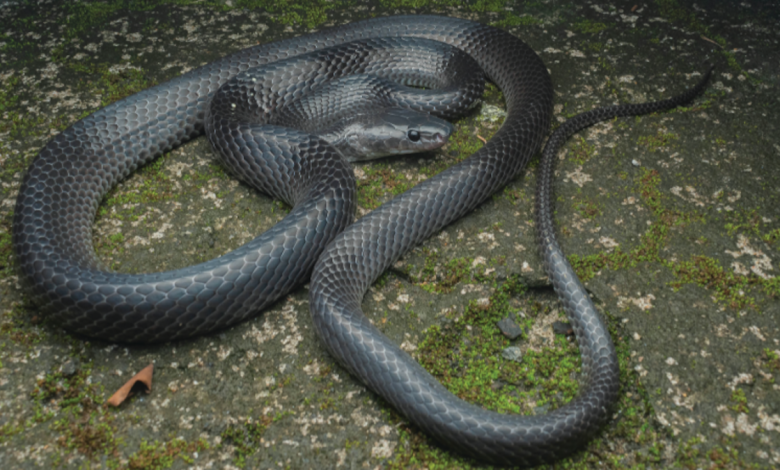New wolf snake honors the late Steve Irwin

Get the Popular Science daily newsletter💡
Breakthroughs, discoveries, and DIY tips sent every weekday.
Conservationists have discovered a previously unknown species of snake, slithering around one of Earth’s most unique environments. In naming their new reptile, researchers decided to honor one of popular culture’s most unique and beloved wildlife educators: the late, great Steve Irwin.
The snake was discovered in the Nicobar Islands. Located in the Bay of Bengal near mainland India the archipelago is home to a wide range of species not found anywhere else in the world. In 2003, UNESCO added Great Nicobar Island to its protected list of World Network of Biosphere Reserves due to its sheer volume of endemic species. Recently, researchers discovered yet one more animal to further bolster the island chain’s reputation. According to its description in the journal Evolutionary Systematics, the Nicobar Islands contain another nonvenomous wolf snake now taxonomically classified as Lycodon irwini.
L. irwini can grow over three feet long but is nonvenomous. Credit: Girish Choure
L. irwini’s namesake Steve Irwin rose to cultural prominence in the late 1990’s and early 2000’s following the debut of his nature show, The Crocodile Hunter. However, Irwin was more than a television personality.The son of the founders of the Queensland Reptile and Fauna Park in Australia, Irwin grew up surrounded by all types of crocodile and other reptile species. Irwin took over management from his parents in 1991 and later renamed the park the Australia Zoo in 1998. Along with his wife and fellow naturalist, Teri, they passionately promoted a love of nature, wildlife, and conservation for years through both the zoo itself and numerous television series, specials, and even a feature film. Steve Irwin tragically died in 2006 after a short-tail stingray’s barb pierced his chest while working alongside Phillipe Cousteau, Jr., in the Great Barrier Reef.
“His passion and dedication to wildlife education and conservation have inspired naturalists and conservationists worldwide, including the authors of the paper,” the researchers wrote in their study.
L. irwini is a nonvenomous, glossy black snake that can grow up to 3.3 feet long. They likely feed on other reptiles as well as small mammals and amphibians, and are likely endemic to the Great Nicobar Island. Given its limited distribution range and ongoing threats from humans, researchers are suggesting that L. irwini be considered an endangered species.
“New species continue to be discovered, exemplified by Lycodon irwini, highlighting the ongoing progress in taxonomy and the incomplete understanding of herpetofaunal diversity and distribution in the region,” the study’s authors wrote.
L. irwini isn’t the only animal named in honor of the late conservationist. Australia alone has at least three species featuring taxonomic dedications to Irwin: a turtle (Elseya irwini), a microscopic koala blood parasite (Trypanosoma irwini), and even a tiny snail appropriately named Crikey irwini. There’s also a small, fast-moving rainforest spider named Terri Irwin, Leichhartdeus terriirwinae. While their children, Bindi and Robert, are following in their footsteps, it’s unclear if they have any species named after them. Maybe that will finally change–depending on how Robert’s run on the current season of Dancing with the Stars goes.
2025 Holiday Gift Guide
Don’t settle for a gift card again this year. Our list of editor-approved gifts suit every personality and budget.
Andrew Paul is a staff writer for Popular Science.




